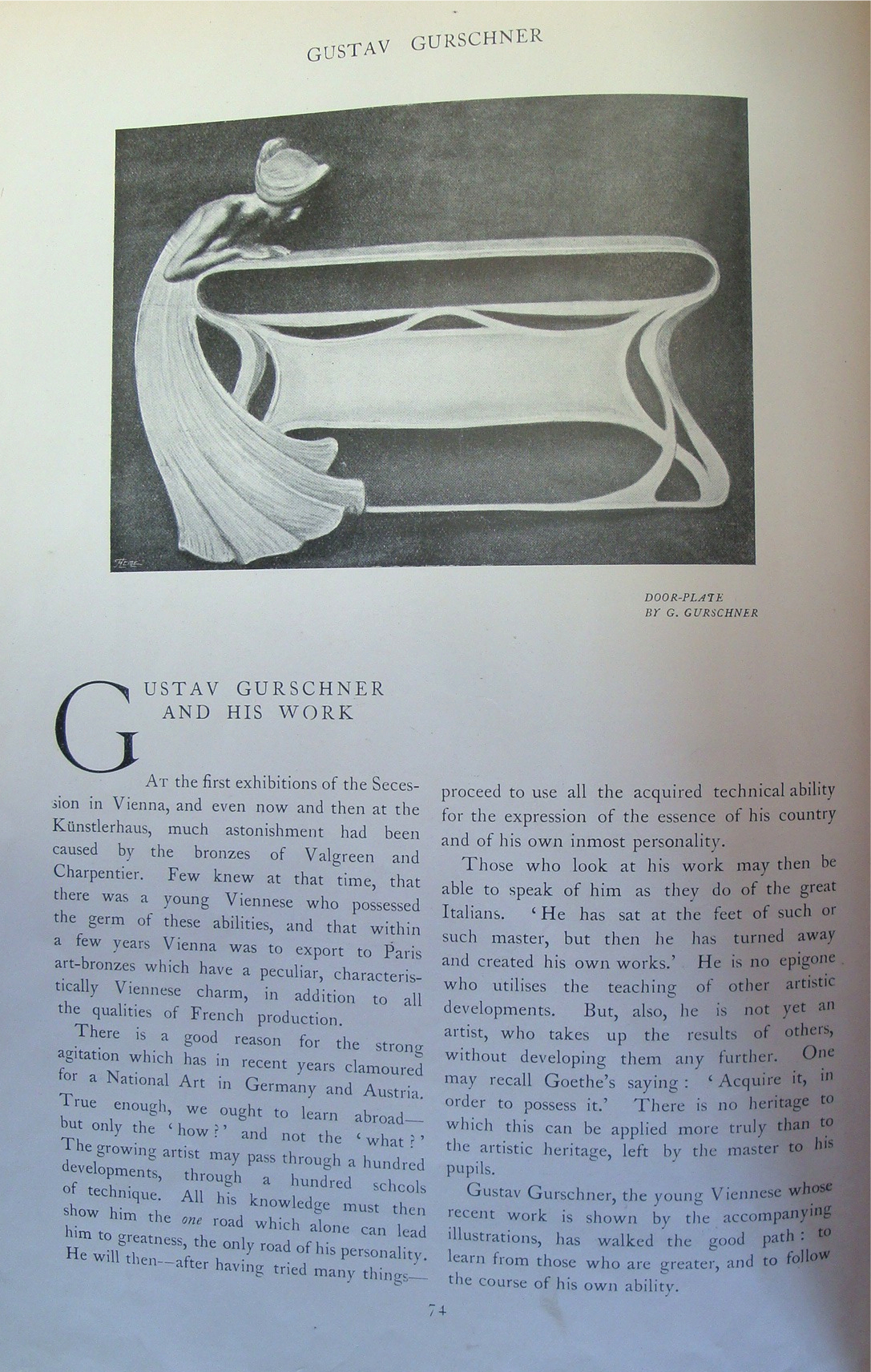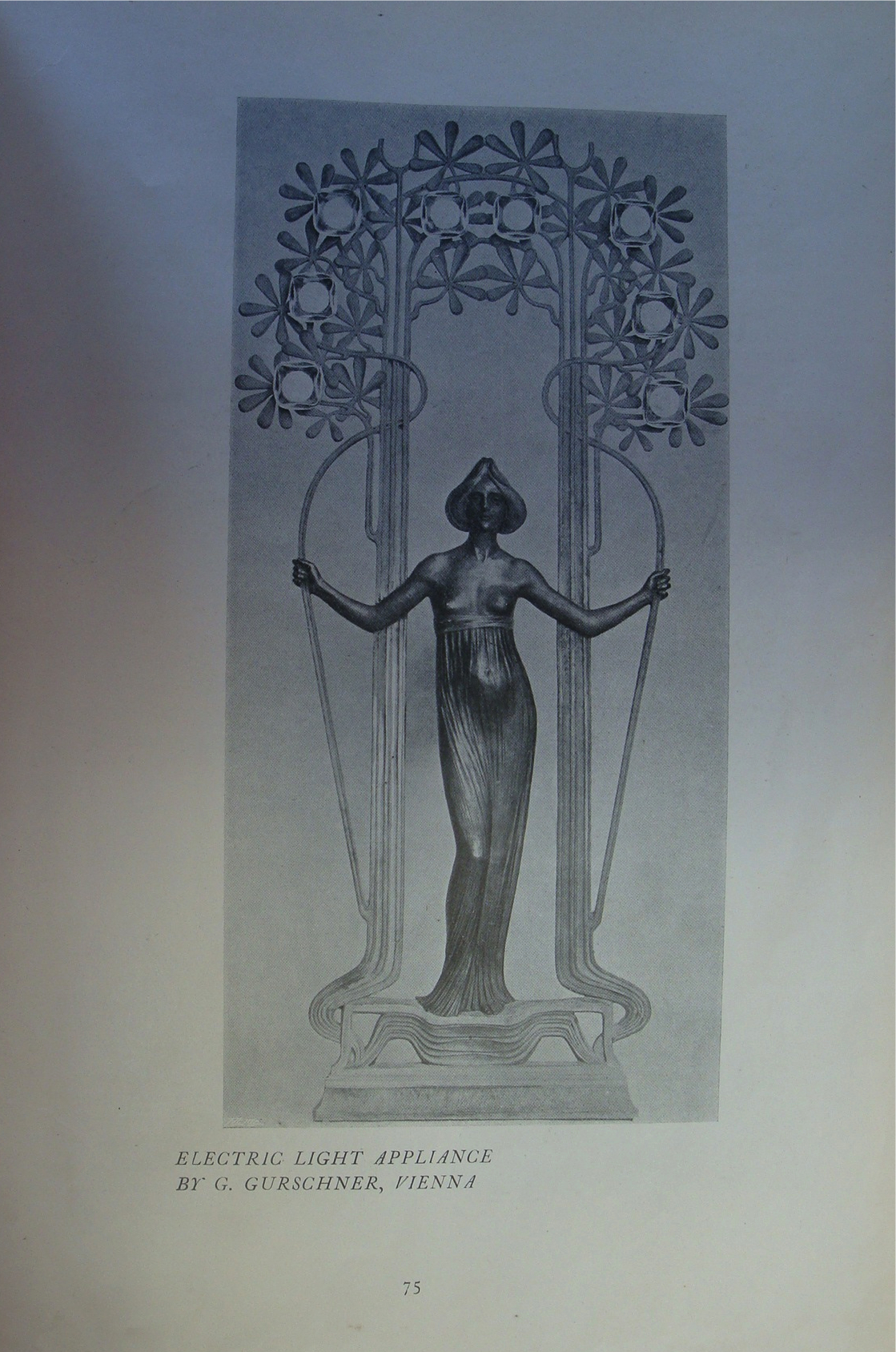The hinged top with front loop handle and raised fluted corners continuing to the box below, further cast with two kneeling nude maidens, all reserved against a ground cast with raised stringing and stylised geometric devices, the sides set with two fluted handles, inscribed GURSCHNER/DEPOSÉ
7 in (17.8 cm) high, 12 ½ in (31.7 cm) wide, 8 in (20.3 cm) deep
cf. W. D., ‘Gustav Gurschner and His Work’, The Artist, Vol. XXVIII, May-August 1900, pp. 74-83Gustav Gurshner, born in Austria, is a leading example of the Art Nouveau movement, focusing on organic qualities in his work. Much like his fellow Austrian artists, Gustav Gurschner’s pieces had an organic design yet were constrained. Unlike other regions of Europe where Art Nouveau designs consumed the entirety of a piece’s surface area.
Born in 1873 Gustav Gurschner spent most of his early life in Austria. He decided at one point to expand his knowledge and set out for Italy to aquire more training in the arts. After a time Gustav Gurschner returned to his birth country and was once again influenced by his home region, which was known for its lovingly handcrafted woodcarvings. In 1898, he participated in the inaugural exposition of the Vienna Secession. He also participated in various exhibitions in Paris including La Société Nationale des Beaux-Arts in 1898, and the Paris Exposition Universelle in 1900. Gustav Gurschner was raised in an area where the local artists took pride in their works and paid attention to every minute detail of their pieces. This attitude towards craftsmanship was not lost on Gustav Gurschner, as seen in his carefully designed pieces. Some time after returning to his country of birth, Gustav Gurschner, headed to Vienna where he began to create Viennese maidens, women who were known for their elongated and elegant qualities. His maidens take on highly feminine qualities, each representing the graceful and demure qualities seen in the ideal woman of this time period. From 1904 to 1908, he was part of the Hagenbund, a group of like-minded Austrian artists.
The Art Nouveau period was at its peak when this piece was created, as seen in the women figures and simple line patterns on the coffer. Strongly inspired by Alphonse Mucha and his lithographed posters, the Art Nouveau period swept through Europe. Artists such as Victor Horta, Louis Tiffany and Hector Guimard were inspired, much like Gustav Gurschner to create a new art style. The movement focused on simplistic and organic designs, moving away from the rigid and bulky qualities in Neo Gothic designs. Designs took on simplistic and delicate qualities, the exact opposite of their predecessors.
Gurschner’s skills laid in his ingenious combination of purpose and beauty. He showed that the form of every object is given by its destination, that nothing, which has been added as mere external ornament, can be beautiful, but that the beauty of the object has to be developed out of a serviceable form. This unique ability can be found in the design of this coffret, and also a larger size that is impressive considering the period in which it was created.
Other works by Gustav Gurschner may be found in the collections of the Victoria and Albert Museum, the Virginia Museum of Fine Arts, and the Dallas Museum of Art.























